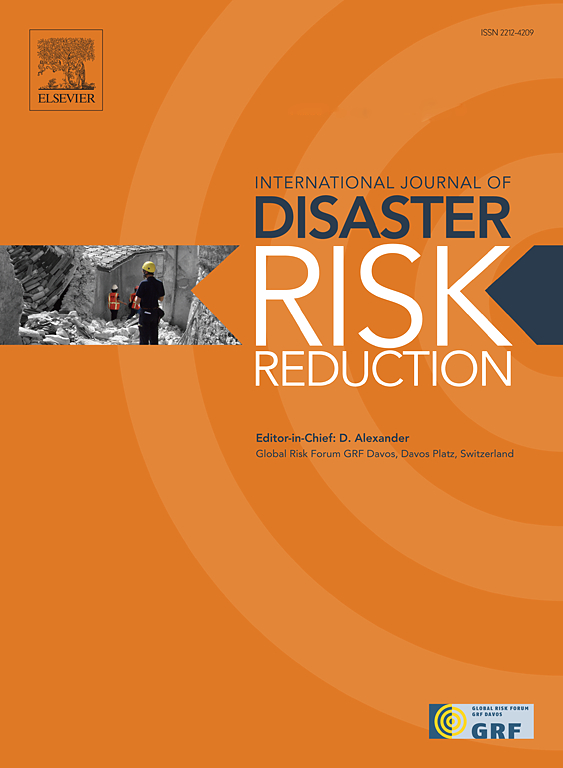Disaster policy change through the enactment of the National Disaster Risk Reduction and Management law in the Philippines: Punctuated equilibrium and multiple streams theories
IF 4.2
1区 地球科学
Q1 GEOSCIENCES, MULTIDISCIPLINARY
International journal of disaster risk reduction
Pub Date : 2025-05-14
DOI:10.1016/j.ijdrr.2025.105576
引用次数: 0
Abstract
The National Disaster Risk Reduction and Management (NDRRM) Act of 2010 transformed the Philippines' disaster risk reduction and management system from a reactive system to a proactive and inclusive system. It replaced the outdated Presidential Decree No. 1566. This new act had been pursued by several advocacy groups representing the government and nongovernmental organizations since 1989 as a response to climate change and rising temperatures that could increase the country's disaster risks and vulnerabilities. In this paper, the events that led to the passage of the NDRRM Act are described using punctuated equilibrium and multiple streams theories. The punctuation in the disaster risk reduction and management policy resulted from merging the need to address the inadequacies of the disaster risk reduction and management system during the period (the problem stream) with a policy designed to address emerging trends and needs (the policy stream) and the changing interests of members of Congress (the politics stream) due to the change in the national mood triggered by the massive flood in the National Capital Region in 2009.
菲律宾通过制定国家灾害风险减少和管理法来改变灾害政策:间断均衡和多流理论
2010年的《国家灾害风险减少和管理法》将菲律宾的灾害风险减少和管理系统从被动系统转变为主动和包容系统。它取代了过时的第1566号总统令。自1989年以来,代表政府和非政府组织的几个倡导团体一直在推动这项新法案,作为对气候变化和气温上升可能增加该国灾害风险和脆弱性的回应。在本文中,使用间断均衡和多流理论描述了导致NDRRM法案通过的事件。减少灾害风险和管理政策的标点符号是由于将解决期间减少灾害风险和管理系统不足的需要(问题流)与旨在解决新趋势和需求的政策(政策流)和国会议员的利益变化(政治流)合并在一起,这是由于2009年国家首都地区的大规模洪水引发的国民情绪的变化。
本文章由计算机程序翻译,如有差异,请以英文原文为准。
求助全文
约1分钟内获得全文
求助全文
来源期刊

International journal of disaster risk reduction
GEOSCIENCES, MULTIDISCIPLINARYMETEOROLOGY-METEOROLOGY & ATMOSPHERIC SCIENCES
CiteScore
8.70
自引率
18.00%
发文量
688
审稿时长
79 days
期刊介绍:
The International Journal of Disaster Risk Reduction (IJDRR) is the journal for researchers, policymakers and practitioners across diverse disciplines: earth sciences and their implications; environmental sciences; engineering; urban studies; geography; and the social sciences. IJDRR publishes fundamental and applied research, critical reviews, policy papers and case studies with a particular focus on multi-disciplinary research that aims to reduce the impact of natural, technological, social and intentional disasters. IJDRR stimulates exchange of ideas and knowledge transfer on disaster research, mitigation, adaptation, prevention and risk reduction at all geographical scales: local, national and international.
Key topics:-
-multifaceted disaster and cascading disasters
-the development of disaster risk reduction strategies and techniques
-discussion and development of effective warning and educational systems for risk management at all levels
-disasters associated with climate change
-vulnerability analysis and vulnerability trends
-emerging risks
-resilience against disasters.
The journal particularly encourages papers that approach risk from a multi-disciplinary perspective.
 求助内容:
求助内容: 应助结果提醒方式:
应助结果提醒方式:


